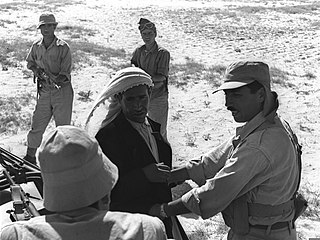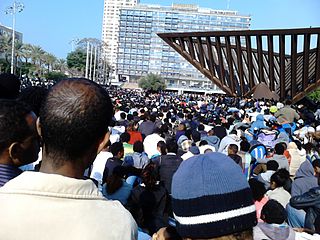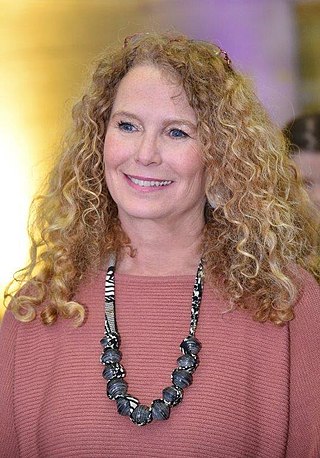There are tens of thousands of Sudanese refugees in Egypt, most of them seeking refuge from ongoing military conflicts in their home country of Sudan. Their official status as refugees is highly disputed, and they have been subject to racial discrimination and police violence.

The Prevention of Infiltration Law is an Israeli law enacted in 1954, which deals with unauthorised entry of people into Israel, which it terms infiltration. The law defines offenses of armed and non-armed unauthorised entry to Israel. The law authorises the Minister of Defense to order the deportation of an infiltrator before or after conviction.
Human trafficking in Israel includes the trafficking of men and women into the country for forced labor and sex slavery. The country has made serious efforts to reduce the problem in recent years and now ranks 90th out of 167 countries who provide data. Identification of victims, criminal justice work and efforts to co-ordinate with business and government agencies has been concerted in reducing this problem in the last decade.

African immigration to Israel is the international movement to Israel from Africa of people that are not natives or do not possess Israeli citizenship in order to settle or reside there. This phenomenon began in the second half of the 2000s, when a large number of people from Africa entered Israel, mainly through the then-lightly fenced border between Israel and Egypt in the Sinai Peninsula. According to the data of the Israeli Interior Ministry, 26,635 people arrived illegally in this way by July 2010, and over 55,000 by January 2012. In an attempt to curb the influx, Israel constructed the Egypt–Israel barrier. Since its completion in December 2013, the barrier has almost completely stopped the immigration of Africans into Israel across the Sinai border.
Sudanese refugees are persons originating from the country of Sudan, but seeking refuge outside the borders of their native country. In recent history, Sudan has been the stage for prolonged conflicts and civil wars, as well as environmental changes, namely desertification. These forces have resulted not only in violence and famine but also the forced migration of large numbers of the Sudanese population, both inside and outside the country's borders. Given the expansive geographic territory of Sudan, and the regional and ethnic tensions and conflicts, much of the forced migration in Sudan has been internal. Yet, these populations are not immune to similar issues that typically accompany refugeedom, including economic hardship and providing themselves and their families with sustenance and basic needs. With the creation of a South Sudanese state, questions surrounding southern Sudanese IDPs may become questions of South Sudanese refugees.

Israel – South Sudan relations refers to the bilateral ties between the State of Israel and the Republic of South Sudan.
Large numbers of refugee kidnappings in Sinai occurred between 2009 and 2014. Refugees from Sudan, Ethiopia and Eritrea were transported to Sinai and held hostage by members of Bedouin tribes. Typically, the hostages were forced to give up phone numbers of relatives and were tortured with the relatives on the phone, in order to obtain ransoms in the range of $20,000–$40,000. If the families could not pay, the hostages were killed. The Egypt–Israel barrier, designed to keep out African migrants, caused the Rashaida traffickers to lose income from transporting refugees to the border, so they started to concentrate on kidnappings.
The Saharonim Prison is an Israeli detention facility for African asylum seekers located in the Negev desert. It is the largest of a planned four camps with its total capacity of 8,000 inmates. Together with the Ktzi'ot prison, Sadot prison and the Nachal Raviv tent camp they detain South Sudanese, Sudanese and Eritrean asylum seekers who crossed the border from Egypt to Israel.

Galia Sabar is the president of Ruppin Academic Center, one of Israel leading public colleges. Prior, she was a professor of African Studies at Tel Aviv University and the Chair of African Studies at the Department of Middle Eastern and African History at Tel Aviv University, where she also served as the coordinator of African Studies at the S. Daniel Abraham Center for International and Regional Studies. Sabar has published seven books and dozens of articles in professional journals. In addition to her academic research, Sabar has been a leading social activist in Israel mainly in relation to Ethiopian immigrants as well as in partnership with various NGOs assisting African labor migrants and asylum seekers. In May 2009, in recognition of her work combining academic rigor with social activism, Sabar received the Unsung Heroes of Compassion Award, sponsored by the international organization Wisdom in Action and delivered by the 14th Dalai Lama.

Sound of Torture is a 2013 documentary film written and directed by Israeli filmmaker Keren Shayo which follows Eritrean radio host and human rights activist Meron Estefanos as she reports on Eritrean refugees who have been captured in Sudan while migrating across the Sinai Peninsula into Israel.
A refugee crisis can refer to difficulties and dangerous situations in the reception of large groups of forcibly displaced persons. These could be either internally displaced, refugees, asylum seekers or any other huge groups of migrants.
The Mustapha Mahmoud Park Massacre denotes a 2005 incident in Cairo, in which dozens of Sudanese asylum seekers were killed. The civil wars in Sudan that have been taking place on and off since 1955, the subsequent destabilization and economic collapse caused by the country's infrastructure and economy, and the fighting in Darfur (2003), forced millions of Sudanese civilians to flee their homes and cities. Many of them arrived in Egypt, the neighboring country.

Azezet Habtezghi Kidane is an Eritrean-born British nun and human trafficking activist working in Israel.

Sheffi Paz is an Israeli activist against illegal immigrants and border infiltration, living in south Tel Aviv. In the past she was an activist in the Israeli political party Meretz, and since 2012 she has been one of the leaders in the movement against illegal immigration to Israel, and the concentration of these infiltrators in the old neighborhoods of south Tel Aviv.

The term non-Jewish African refugees primarily refers to the Sudanese and Eritrean refugee population migrating to Israel through the Sinai Desert. Israeli policy concerning these refugees has evolved from a policy of neutrality to a policy of deterrence. These refugees began arriving in Israel in the 21st century, led by Bedouin smugglers. The current non-Jewish African refugee population in Israel is approximately 36,000.

The Hotline for Refugees and Migrants (Hotline) is a human rights organization that utilizes direct service provision, litigation, and advocacy to uphold the rights of refugees, migrant workers, and survivors of human trafficking in Israel. In Hebrew, the organization is known as המוקד לפליטים ולמהגרים (hamoked l'plitim v l'mehagrim).
Usumain Tukuny Baraka is a Sudanese activist and asylum seeker living in Israel. He is a leader of Israel's asylum-seeking community and the first Darfuri refugee to graduate from a Hebrew-language program in an Israeli university.

Jamal Abdelmaji Eisa Mohammed is a Sudanese-born runner competing internationally over 5,000 and 10,000 metres. Mohammed was one of 29 athletes across 12 disciplines who representing the refugee Olympic team at the 2020 Tokyo Olympics.

An ongoing refugee crisis began in Africa in mid-April 2023 after the outbreak of the 2023 Sudan conflict. By December, more than 1.5 million people have fled the country, while more than 5.6 million had been internally displaced. These included at least 75,000 migrant returnees and other third-country nationals.
Ethiopian refugees in Sudan are individuals from Ethiopia who have sought asylum in Sudan due to various reasons, including the two-year civil war in the Tigray region and other challenging circumstances in Ethiopia.














